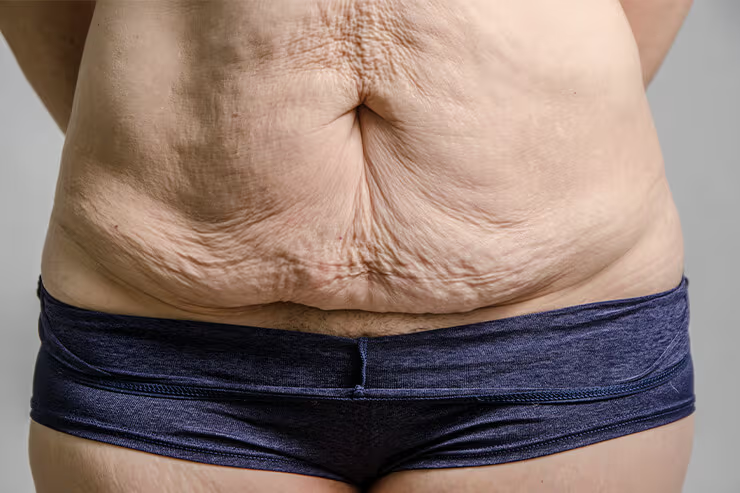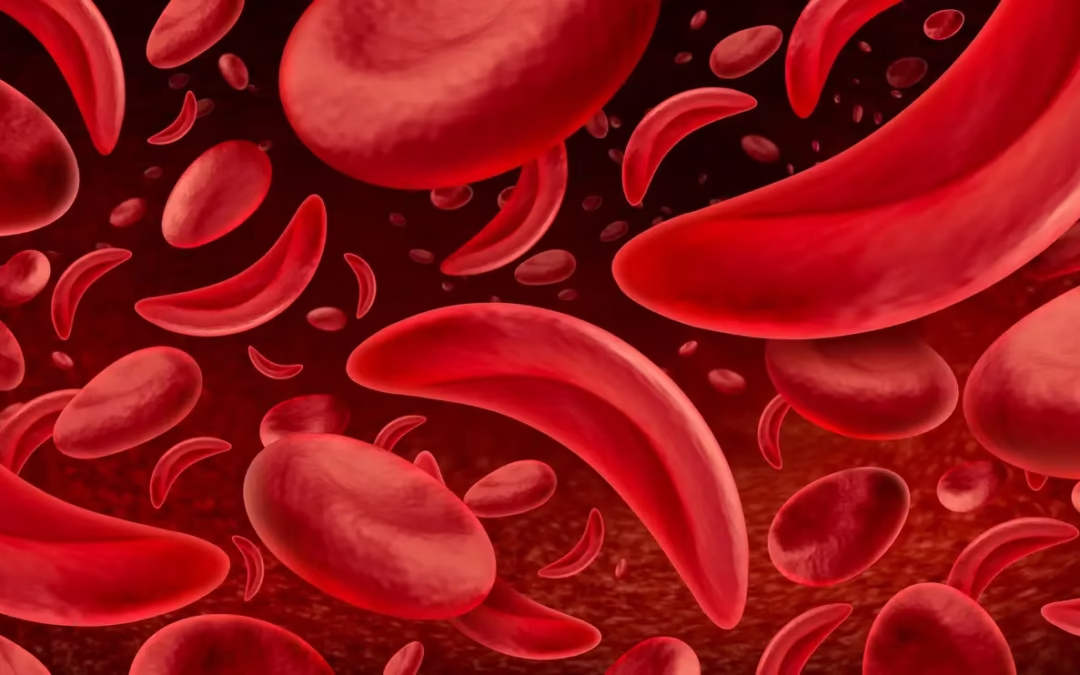Content discussed in this post
What collagen is and how the body absorbs it
Does collagen work for skin during weight loss
What to do and what to take to minimize skin laxity
Time course and factors that determine laxity
When to consider excess-skin surgery
How the surgical process and recovery work
Quick FAQ
Important notice (health disclaimer)
References and recommended reading
What collagen is and how the body absorbs it
Collagen is the most abundant structural protein in the body. It gives firmness to skin, tendons, cartilage, and bone. When we ingest hydrolyzed collagen, it has been pre-broken into smaller peptides. In the intestine, it is absorbed as amino acids and short peptides that enter the bloodstream and can be used in many tissues. The body does not take collagen from a jar and “paste it” directly into the skin. It uses those building blocks where they are most needed.
Studies show small improvements in skin elasticity and hydration after 8 to 12 weeks of collagen peptides at typical doses of 2.5 to 10 g per day. The effect is modest and depends on product quality and study design. In other words, it may help a little, but it is not a miracle and does not replace the factors that matter most during weight loss.
Does collagen work for skin during weight loss
During weight loss, especially large losses, the skin loses internal volume and the collagen–elastin framework may already be affected by time, genetics, sun, and smoking. Collagen peptides can be an adjunct. They do not prevent significant skin laxity if weight loss is large or rapid or if there are risk factors for low elasticity. Still, for those who want to try them, they are generally safe and can complement strategies with greater impact.
What to do and what to take to minimize skin laxity
The best approach combines adequate nutrition, strength training, and skin habits. Supplements can help as add-ons.
1) Total daily protein
Practical target: 1.6 to 2.2 g of protein per kg of target body weight per day during weight loss, adjusted by your clinician.
Split into 3 to 5 meals with 25 to 35 g of protein each.
Whey protein or other high-quality protein sources help you hit the target.
Collagen is not a complete protein. It is low in tryptophan and leucine, so it should not replace your daily protein quota. If you want to use collagen, treat it as an extra.
2) Nutrients that matter for skin collagen
Vitamin C is essential for enzymes that stabilize collagen fibers. Include fruits and vegetables rich in vitamin C.
Zinc and copper are involved in skin repair. A varied diet usually covers needs, but your clinician can assess specific requirements.
3) Structured strength training
Two to four sessions per week, progressive, involving upper and lower body.
Gradually increase load and volume. Preserving or gaining lean mass restores lost volume and supports the skin.
4) Sustainable weight-loss pace
Around 0.5 to 1% of body weight per week helps the body adapt.
Sleep well, hydrate, avoid smoking and excessive sun. Daily sunscreen protects existing collagen.
Topical care such as prescription retinoids and moisturizers with urea or ceramides can improve texture and appearance.
5) Optional supplements
Creatine 3 to 5 g per day supports training performance and lean-mass maintenance.
Collagen peptides 5 to 10 g per day for 8 to 12 weeks may bring small elasticity gains.
Gelatin with vitamin C before training has experimental studies suggesting collagen stimulation in tendons. It is optional and does not replace daily protein.
Time course and factors that determine laxity
Skin can retract partially over time. Improvements usually occur in the first 12 to 24 months after major weight loss. Retraction capacity depends on age, genetics, duration of obesity, amount and speed of loss, sun exposure, and smoking. Even with everything done right, excess skin may remain on the abdomen, arms, thighs, and breasts. This does not mean you did something wrong. It reflects biology and the tissue’s history.
When to consider excess-skin surgery
Surgery is considered when redundant skin causes chafing, recurrent infections, pain, hygiene or activity limitations, or when the cosmetic impact significantly affects self-esteem. Good times to evaluate:
Weight stable for 6 to 12 months
Near the target weight defined with your team
Adequate nutrition and up-to-date labs, without anemia or major deficiencies
No smoking in the weeks before and after surgery for healing safety
Common procedures include abdominoplasty or abdominal dermolipectomy, brachioplasty for arms, thigh lift, mastopexy with or without implants, and lower body lift in selected cases. Procedures are often staged, respecting surgical time and safety limits.
How the surgical process and recovery work
The journey includes preoperative evaluation, photos, incision planning, and an honest discussion about scarring. Postoperatively, compression garments are common for 4 to 6 weeks, care for drains when present, and early ambulation to reduce thrombosis risk.
Return to daily activities occurs in 2 to 6 weeks depending on the procedure. More intensive training is usually cleared later. Possible complications include seroma, wound dehiscence, infection, thromboembolism, and hypertrophic scarring. Surgeon experience, patient preparation, and following instructions reduce risks and improve outcomes.
Quick FAQ
Does collagen go “straight” to the skin?
No. It is digested into amino acids and short peptides. The body distributes them as needed. Some studies show small elasticity gains, but the effect is modest.
Can I swap part of my daily protein for collagen?
Not ideal. Collagen is incomplete in essential amino acids. Use complete protein sources and, if you wish, add collagen as an extra.
How much collagen should I take if I want to test it?
Five to ten grams per day for 8 to 12 weeks is most common in skin studies.
If I lose weight slowly, will I avoid all skin laxity?
It helps a lot, but does not guarantee it. Age and duration of obesity matter.
When can I have excess-skin surgery?
When weight has been stable for 6 to 12 months and your team confirms nutrition and labs are adequate.
Important notice (health disclaimer)
This content is educational and does not replace medical care. Nutrition, training, and surgical decisions should be personalized with your healthcare team.
References and recommended reading
Proksch E, et al. Oral intake of specific collagen peptides improves skin elasticity and hydration. Skin Pharmacol Physiol.
Choi SY, et al. Effects of collagen tripeptide on skin properties. J Med Food.
De Miranda RB, et al. Effects of hydrolyzed collagen supplementation on skin aging: systematic review. Int J Dermatol.
Jäger R, et al. International Society of Sports Nutrition position stand: protein and exercise. J Int Soc Sports Nutr.
Phillips SM, et al. Protein per-meal distribution for muscle during energy restriction. Appl Physiol Nutr Metab.
American Society of Plastic Surgeons. Body contouring after massive weight loss: guidelines and patient safety considerations.
Hurwitz DJ, et al. Postbariatric body contouring: outcomes and complications. Aesthetic Plast Surg.



